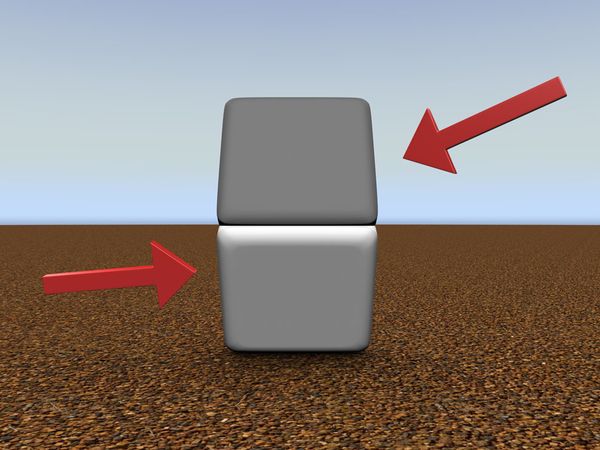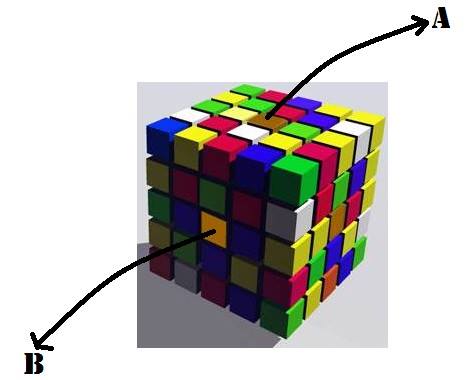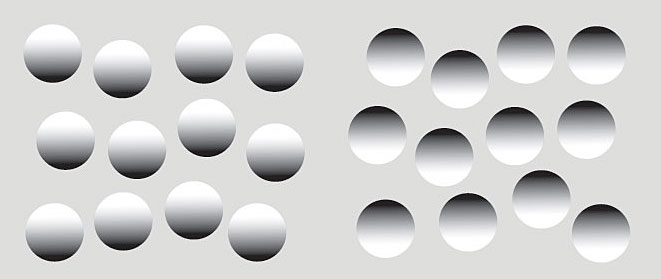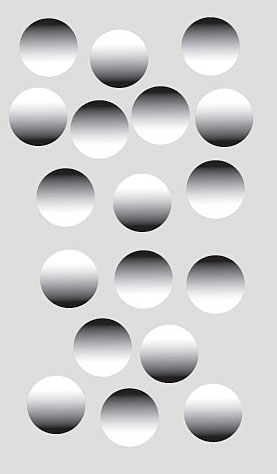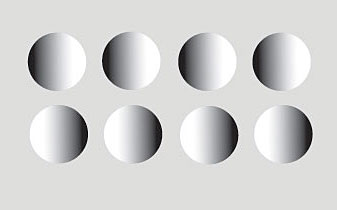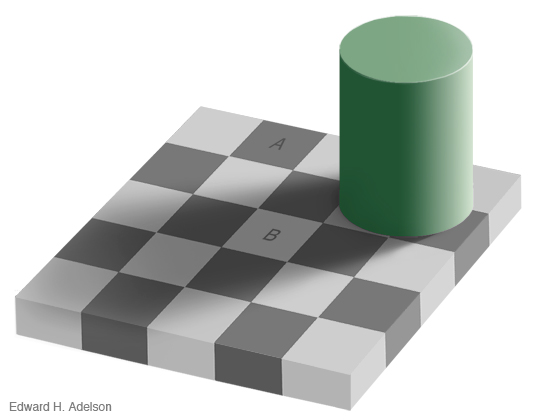[This piece is the first installation in a series on scientific reasoning and skepticism.]
Look at the picture below. Which part of the block looks darker, the one on top or the one on the bottom?
Actually, they’re exactly the same color. You can see this if you cover the middle portion of the grey object using your index finger. Now study the next picture below and examine the tiles labeled A and B. What is the color of tile A? How about tile B?
What if I tell you that tiles A and B have the same color? If you don’t believe me (and it’s right that you don’t, because wtf they’re not the same color), save this picture and examine it using appropriate software. You can also print the picture on paper, cut out the tiles in question, and compare their colors side by side.
It is often said that we see the world through a glass darkly. What this means is our perception of the world is not perfect but rather goes through a flawed filter, the proverbial darkened glass. In reality, our perception of the world is not merely distorted by physical obstructions like dark glasses; our very minds are riddled with cognitive biases that are at the very core of how we perceive the universe. The dark glass we see the world through is part of who we are. It is us.
Why do we see tiles A and B above as having different colors? Before we answer that question, take a look at the picture below.
Because of the shading, the circles appear three-dimensional. The fact that we perceive depth just because of shading is already interesting. Even more interesting is the fact that to nearly everyone, the same group of circles appear to bulge out (they are “eggs”) and the same group appear to cave in (they are “cavities”). Which of the circles look like eggs and which look like cavities? Assuming all of you who read this are humans, most of you will see the circles on the left as the eggs and the circles on the right as the cavities. The left portion of the picture looks like a flat surface with several bumps while the right portion reminds us of a golf ball’s surface.
It’s also interesting to note that it’s difficult to see it the other way around. Go ahead, try it. Imagine the circles on the left as cavities and those on the right as eggs. (Personally, I find the former more difficult to do than the latter.)
Scientists think our tendency to see the circles on the left as the convex eggs is due to our mind’s innate assumption that light always comes from above. For the left circles to be cavities, light would have to come from underneath. Our brains seem to find this latter scenario unlikely. In fact, our mind’s assumption that light always comes from above is so strong that the convex eggs pop out from among the cavities in the picture below.
If you invert the picture above, the circles would exchange roles; the ones that used to be cavities will become the eggs and vice versa. I encourage you to give it a try. You can view the page with your head upside down or, if you’re reading this on a laptop or a tablet, try flipping your device and see the eggs become cavities.
Once you or your gadget is upright again, look at the picture below.
Like last time, you will see eggs and cavities, but this time it’s easy to imagine either group as the eggs. Unlike last time, you can easily shift from the point of view that the upper circles are eggs to the view that the lower circles are the eggs. Our minds can easily imagine a scenario where light comes from the left to the scenario where light comes from the right.
Since our brains are products of our evolutionary history, so are our minds. We are descendants of creatures who had minds that allowed them to survive their world long enough to pass on their genes, and in their world light usually came from the Sun. In the sky, the Sun can be found to one’s right, one’s left, or above, but never below. Our minds have therefore evolved to use shortcuts that disregard the scenario of light coming from underneath.
The visual data our brain receives from our eyes are not enough to create an exact simulation of the world. From the last picture above, we see that the shading of the circles can be interpreted in at least two ways. In fact, the shading can be interpreted in many other ways; our brains just picked two among them. Another way to interpret the last image is as set of flat circles with uneven shading, but our brains disregarded that option, too. Evolution produced human minds that usually assume evenly shaded surfaces.
The mind’s problem of coming up with an accurate picture of the world given the visual data from the eyes is what engineers would call an ill-posed problem; there are more unknowns than there are given, and so no one correct solution can be derived from the given. In order for our ancestors to survive, that is, in order for them to find predators lurking nearby before they become said predator’s lunch, their minds had to evolve shortcuts that assume certain things about the world. Those assumptions may not always be true, but they are true often enough to be useful. An example of such assumption is the one that light always comes from above and never from underneath. We carry that innate assumption, that cognitive bias, with us. Today it may allow us to see eggs and cavities in a picture on a screen, but a million years ago it allowed our ancestors to avoid that lion waiting behind that stand of grass.
Let’s go back to the question of why tiles A and B in the second picture appear to have different colors even though they’re exactly the same. Because of the context, our minds are made to think that tile B is in the shadows. This, in turn, makes our visual processing system compensate for the shadow, “subtracting” the shade from the raw data to produce a final simulation that is erroneous, one in which tiles of the same color appear to have different hues. Because of a similar cognitive process, we see tiles A and B in the picture below as tiles with different shades, even though they’re exactly the same shade of grey.
Intuitively, we feel as if our brains simply interpret raw information coming from our senses. But as mentioned, the data from our sense organs are not enough to tell us everything we need to know about our surroundings. Because of this, our minds process the information from our senses, adding countless assumptions that may be false and disregarding many scenarios that are possible before creating a final simulation of the world. Our perceptions are heavily processed, extremely edited, assumption-laden finished products and not the raw information we usually think they are. Such is the dark glass through which we see the world.
How then, you ask, do we know what’s behind the dark glass? How can we see the world from outside our tinted windows? In other words, how do we know what’s really real? The answer: we turn to science.
In the next installation in this series, we will explore several more cognitive biases and then explain how the methods of science allow us to use our senses to transcend the limitations of those very senses we use, giving us glimpses of the reality that throbs and thrives on the other side of the dark glass.

